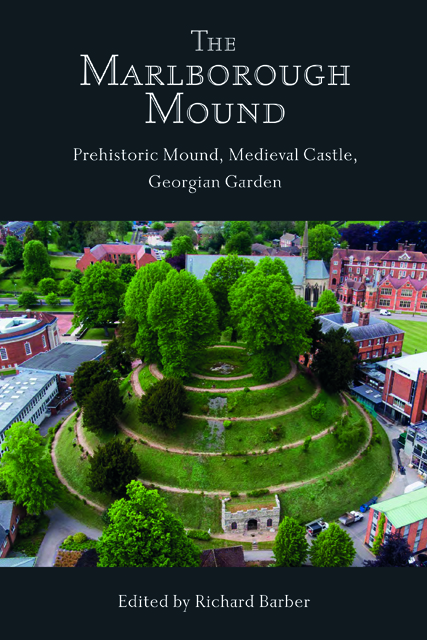Book contents
- Frontmatter
- Contents
- List of Figures
- Acknowledgements
- Preface
- 1 ‘One remarkable earthen-work’: The Neolithic Origins of the Marlborough Mound
- Afterword: The Round Mounds Project
- 2 Castles and the Landscape of Norman Wessex, c. 1066–1154
- 3 Marlborough Castle in the Middle Ages
- 4 The Mound as a Garden Feature
- Epilogue: The Marlborough Mound Trust
- A Inquisition into the State of Marlborough Castle, 11 September 1327
- B Castellum Merlebergensis, by H. C. Brentnall, F.S.A.
- C Constables of Marlborough Castle
- D Marlborough Castle: Archaeological Findings for the Medieval Period
- Bibliography
- Notes
- Contributors
- Index
2 - Castles and the Landscape of Norman Wessex, c. 1066–1154
Published online by Cambridge University Press: 11 January 2023
- Frontmatter
- Contents
- List of Figures
- Acknowledgements
- Preface
- 1 ‘One remarkable earthen-work’: The Neolithic Origins of the Marlborough Mound
- Afterword: The Round Mounds Project
- 2 Castles and the Landscape of Norman Wessex, c. 1066–1154
- 3 Marlborough Castle in the Middle Ages
- 4 The Mound as a Garden Feature
- Epilogue: The Marlborough Mound Trust
- A Inquisition into the State of Marlborough Castle, 11 September 1327
- B Castellum Merlebergensis, by H. C. Brentnall, F.S.A.
- C Constables of Marlborough Castle
- D Marlborough Castle: Archaeological Findings for the Medieval Period
- Bibliography
- Notes
- Contributors
- Index
Summary
Writing in the late twelfth century, the chronicler William of Newburgh famously described England’s royal castles as forming ‘the bones of the kingdom’, reflecting their strategic and symbolic roles as the scaffold around which royal authority was constructed. If castles were the bones of Norman England, then Wessex was its heart. This chapter considers the structures, distribution and landscape contexts of castles in Wessex generally, and the region around Marlborough more specifically, in order to illuminate something of the wider pattern of castle-building in the eleventh and twelfth centuries within which Marlborough castle can most appropriately be understood. From the start, however, it is important to emphasise that, in terms of the historical and archaeological study of fortification, Wessex is a region far more closely associated with Anglo-Saxon defence, in the form of burhs (or fortified centres) like Cricklade, Oxford, Wallingford and Wareham, than Norman fortresses. We often think, talk and write about ‘Norman castles’ – like burhs – as if they were a single species of fortification when this is far from the truth. Just as modern archaeological scholarship is revealing the variety of burhs and other types of fortification that dotted the landscape of Anglo-Saxon Wessex, including private thegnly (or aristocratic) burhs, tower-naves and civil defence infrastructure such as beacons and military roads, then so too are we now much more aware of the greater number and variety of Norman castles than previously recognised, and also the myriad functions that these sites served beyond their military roles.
Frequently bracketed together and explained away as the means by which an incoming alien elite conquered and dominated a hostile population, the Norman castles of Wessex have been characterised by historians and archaeologists alike as essentially military features of the landscape. In the Archaeological Research Framework for South-West England, published in 2007, for example, castles are subsumed under the sub-heading ‘Defence and Warfare’, underlining our continuing obsession with viewing these sites through the lens of military history and architecture. This chapter takes a rather different approach and stresses that we should pay equal, if not greater, attention to the day-to-day roles of Norman castles as high-status residences and estate centres and to their symbolic importance as emblems of authority and lordship.
- Type
- Chapter
- Information
- The Marlborough MoundPrehistoric Mound, Medieval Castle, Georgian Garden, pp. 25 - 54Publisher: Boydell & BrewerPrint publication year: 2022



